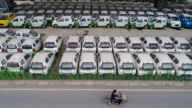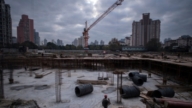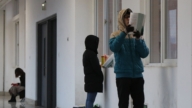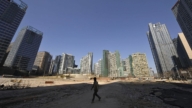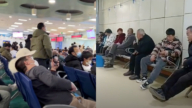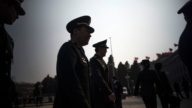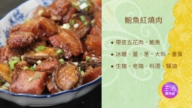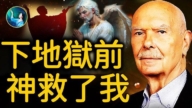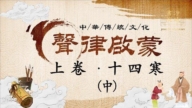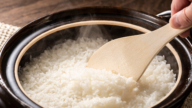【新唐人2014年07月03日讯】近年来,国外不少经济专家一直在唱衰中国经济,中共在反驳中国经济硬着陆的同时,靠大量印制钞票,投资拉动等方式营造经济繁荣假象。不过日前中共喉舌媒体终于承认,中国经济已经患上“结构性绝症”。专家指出,中共决策层遇上了60多年来最难时期。
中共央行在4月末下调农村的商业银行、和合作银行的存款准备金率之后,6月中旬又正式下调了部分商业银行的存款准备金率。短短50天内,央行两度降低了货币准备金。
日前,中共喉舌《人民日报》以“砸钱治不了中国经济内科病”为题,谈及中国资源错配严重,靠发行货币,降低货币准备金的方法,会导致再度吹大房地产、金融等领域的泡沫,使产能过剩行业继续膨胀,阻碍未来经济结构调整和转型的步伐等。
文章承认了中国宏观数据不尽乐观,特别是今年前5个月,经济持续减速,似乎具备了降低准备金的条件。但是文章援引专家的话说,“降准”并非灵丹妙药,货币政策解决不了当前经济存在的结构性问题。
中国金融智库研究员巩胜利:“放也麻烦,收也麻烦,货币发行多了,那就是通货膨胀,如果收了的话,那可能再出现钱荒,是中国60多年以来最艰难的选择。”
降低准备金率要起到应有的效果,必须至少具备3个条件,一是﹕整个经济体系缺货币﹔二是﹕整个经济体系的货币流通顺畅﹔三是﹕金融体系的利率传递机制良好。
目前中国货币发行量已经超过110多万亿元人民币,正在朝着120万亿迈进,超过中国国内生产总值(GDP)将近两倍。按照GDP的增长率来看,中国的货币投放是美国的4倍。而美国的国民生产总值超过15万亿,中国只有8万亿。
中国经济评论家“牛刀”指出,中共的过度投资把钱变成了死钱,扼杀了货币流动的天然属性,而房地产的严重过剩,等于把钱变成钢筋水泥凝固起来了。
北京大学光华管理学院博士生导师王建国:“中国目前,因为经济不活跃、不流通,相互交换的经济交换活动很呆滞。中国现在已经印了很多很多的票子,如果再把票子往里面加,它一旦经济回暖,它就会出现经济泡沫,就会出现金融危机。”
中国经济学泰斗吴敬琏在某个论坛上说﹕“我担心的不是房价降不下去,是担心崩盘。”他还曝光“楼市即将崩盘的10大城市”。吴敬琏指出,现在中国面临相当严重的经济问题和社会问题。靠投资拉动和耗费大量资源来实现增长的发展模式,造成资源的浪费和环境的破坏,已经到了不能容忍的程度。而大量投资造成的货币超发,形成了巨大的通货膨胀压力。
中共党媒引述财经评论人士乔瑞庆的分析指出,目前降低准备金,只能导致货币进一步增加,冲抵美国QE(量化宽松政策)紧缩效应,维持房地产等资产泡沫,而实体经济并不能从“降准”中获取好处。
那么中国的经济问题到底出在哪里呢?
巩胜利:“现在有几个方面,一个是现在中国经济的产业是最低端的,没有高端,第二个方面,中国经济的管制太多,比如房地产、钢铁产业都不是市场经济了,中国货币完全是中国官方控制的,没有按照市场经济的规则来运行。”
吴敬琏指出,中国问题最核心的矛盾还是体制问题。他提出的“体制性障碍”,就是政府有太多配置资源的权利,把GDP的增长看成政绩的主要标志,这是问题所在。而产业结构的问题,造成就业怪象,“大学毕业生、有学位的,就业情况很不好”。他说,“体制上的缺陷,就会造成腐败的蔓延,造成经济发展模式的转型转不过来,而问题积累得越来越多。”
采访编辑/刘惠 后制/李勇
Party Spokesman Admits Economy Facing Toughest Time
The Chinese economy has not been highly regarded by
many international economists for years.
Routinely, the Communist regime reply to the economic hard
landing, is to create the illusion of prosperity
by massive printing of money and investment.
However, recently the party mouthpiece has finally admitted
that China’s economy is “structurally terminally ill."
Experts point out the Chinese Communist Party (CCP) is
at its most difficult time in 60 years.
Late April, the Central Bank lowered deposit reserve ratio
of commercial banks and cooperative banks in rural areas.
The deposit reserve ratio was officially cut
in several commercial banks recently.
In just 50 days, Central Bank lowered reserve currency twice.
Recently, People’s Daily article entitled, “Throwing money
at China’s economic medicine can not cure the disease,"
claimed China suffers from a serious mismatch of resources.
The method of issuing currency and reducing the reserve
currency will lead to further bubbles in real estate
and finance, so that industries with excess capacity continue
to expand, hindering future economic restructuring
and transformation.
The article admitted Chinese macro data has not been
optimistic; especially in the first five months, the economic
slow down, signals it is ready to reduce reserve.
But the article quoted experts as saying, reducing reserve
is not a panacea, monetary policy can not solve the economy’s
structural problems.
Gong Shengli, Chinese financial think tank researcher:
“It is troublesome to either reduce it or increase it.
More money printing means inflation.
Less means a risk of money shortage.
It is the most difficult choice in 60 years."
To achieve effectiveness by reducing the reserve ratio,
at least three conditions must be met:
First, lack of money across the economy;
Second: smooth circulation of currency in the entire economy;
Third: good transmission mechanism of the rate.
More than 110 trillion yuan of currency has been issued,
nearly double China’s gross domestic product (GDP).
According to GDP growth, China’s money supply is
four times that of the United States.
The US GDP is more than 15 trillion dollars, whereas China’s
GDP is 8 trillion dollars, about 64 trillion yuan.
Critic of China’s economy, Niu Dao pointed out the CCP’s
excessive investment is killing the currency and its circulation.
The serious surplus of real estate is equivalent to turning
the currency into concrete.
Professor Wang Jianguo, Management School, Peking University:
“Mutual economic exchange is rather sluggish in China
due to the poor circulation.
Further printing of money on top of excessive printed
money will create an economic bubble and financial crisis
when the economy picks up."
Wu Jinglian notable Chinese economist
said on the Chinese Economists 50 Forum:
“I was not worried about the fall
of house prices, but the collapse."
He also revealed “the 10 cities facing property market collapse."
Wu Jinglian pointed out the serious economic and social
problems in China.
Development growth driven by investment and consumption
of resources has wasted resources and damaged
the environment beyond what can be tolerated.
Excessive currency printing caused by large investments
has become a huge inflationary pressure.
People’s Daily also quoted finance commentator
Qiao Reiqing’s analysis, that reducing the reserve can only lead
to a further increase in the currency, to offset the tightening effect of U.S.
quantitative easing, maintaining real estate and other asset bubbles,
but none of these have a good impact on the real economy.
So, what exactly is China’s economic problem?
Gong Shengli: “One of them is that China’s economy is
at the low end, and the second would be the tight control
of China’s economy.
Real estate and the steel industry are not market economy;
the Chinese currency is fully controlled by the authorities.
It lacks the normal rules of the market economy."
Jinglian said the system is the core contradiction in China.
The “institutional barriers" are that the government
has too much control of resources
and GDP is set as the main indicator of performance.
This system has resulted in a bizarre employment situation:
university graduate employment has been very bad.
He said, “Institutional shortcomings will cause the spread
of corruption, hindering the transformation of economic
development, and accumulate more and more problems."
Edit/LiuHui Post-Production/LiYong





